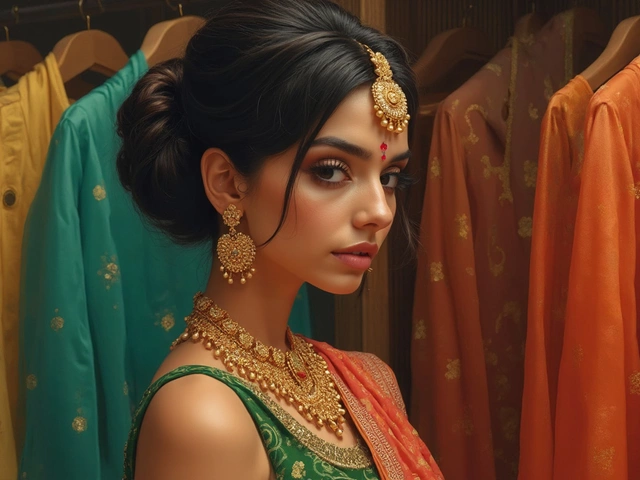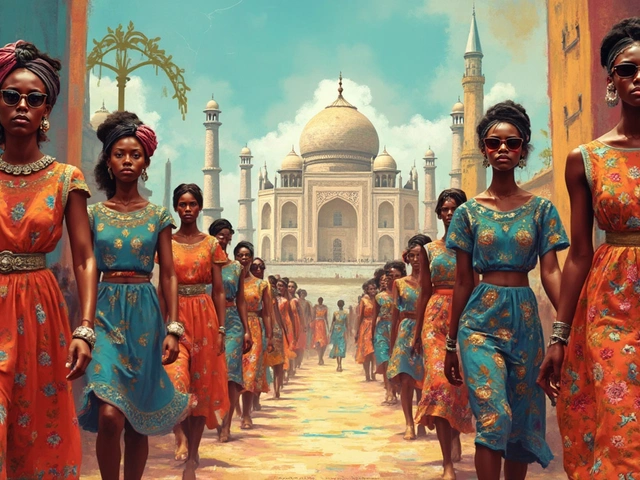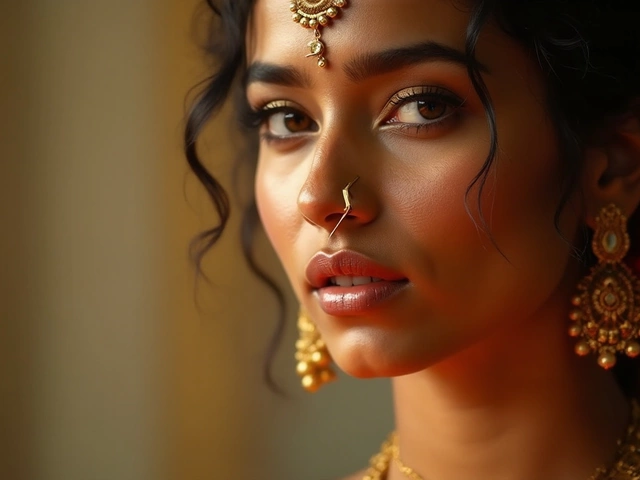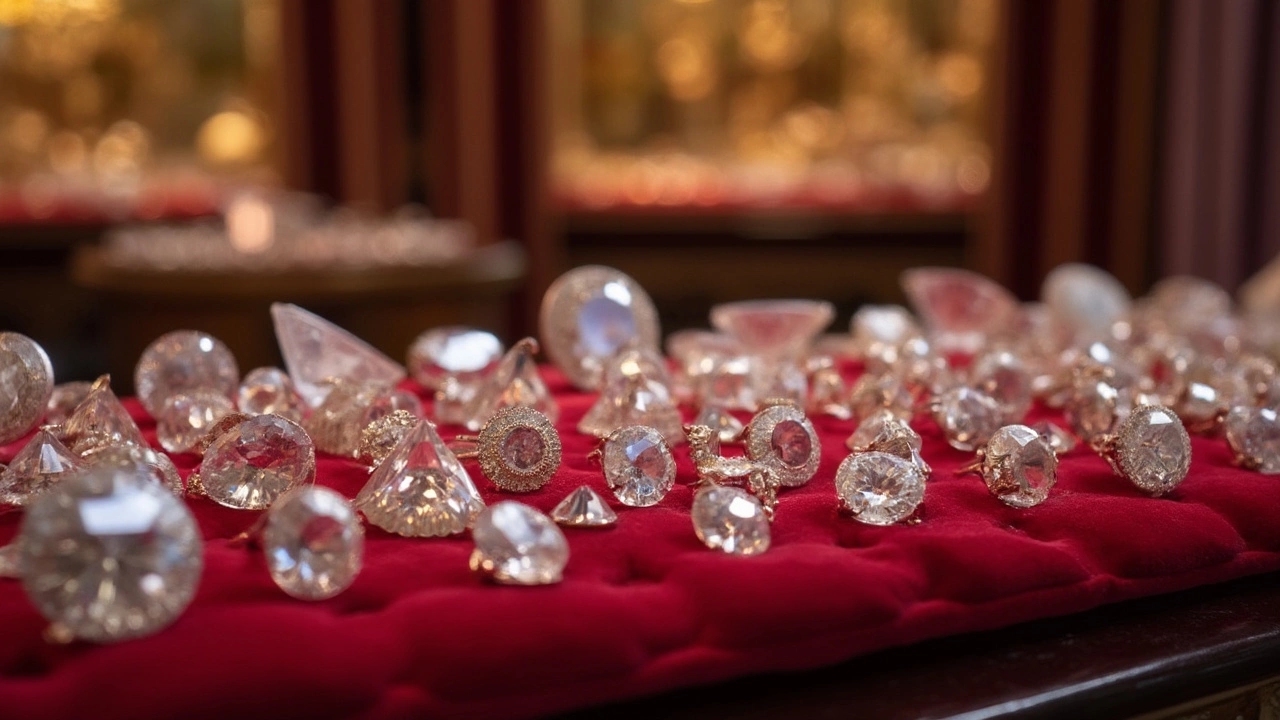
Ever found yourself wondering where the most dazzling diamonds come from? Whether you're planning on getting engaged or just love some sparkle, knowing about diamond origins can seriously up your jewelry game. Sure, all diamonds sparkle, but not all give you the same bang for your buck.
First things first, knowing what makes a diamond top-notch is key. We're talking about the Four Cs: Cut, Color, Clarity, and Carat weight. But here's the thing: where the diamond comes from can play a big role in its overall appeal. Different countries have trademarks when it comes to these precious gems. Some boast perfect clarity, while others might offer unique colors you won't find anywhere else.
So, which country should you look to if you're hunting for the crème de la crème of diamonds? Keep reading, and we'll break it down for you, giving the inside scoop on what makes diamonds from certain places stand out. Plus, we'll dish out some handy tips on buying diamond rings in India, so you're not just dazzled by the sparkle, but also making a smart investment.
- Understanding Diamond Quality
- Top Countries for Diamonds
- Factors Influencing Diamond Prices
- Tips for Buying Diamond Rings in India
- What to Avoid When Choosing Diamonds
Understanding Diamond Quality
So, you're on a mission to find the perfect diamond rings in India, huh? Well, before you dive into the glittery world, grasping the basics of diamond quality is crucial. Diamonds are evaluated based on what's famously termed the Four Cs: Cut, Color, Clarity, and Carat Weight. Let's break down what each of these means so you can shop like a pro.
Cut: It's All About the Sparkle
The cut of a diamond is probably the most underrated C. It’s not about the shape (like round or oval), but how well the diamond’s angles and facets reflect light. A great cut gives the diamond that mesmerizing sparkle. A poorly cut diamond might be cheaper but will look dull even if it’s flawless otherwise. So, always aim for an Excellent or Very Good cut when choosing a diamond.
Color: White or Something Extra?
When it comes to diamond color, less is more. The ideal diamond is colorless, like a drop of pure water. The GIA scales color from D (totally colorless) to Z (noticeable color). In India, most folks go for something between D and H for a nice balance between cost and appearance. But if budget is tight, a slightly colored diamond can still look stunning in the right setting.
Clarity: Spotless or Not?
Clarity measures inclusions or flaws in a diamond. Most diamonds have some, but many are invisible to the naked eye. Flawless diamonds are rare—and come with a hefty price tag. For most buyers, a diamond graded VS1 or VS2 is an excellent choice, offering high quality without the exorbitant price.
Carat Weight: Bigger Isn't Always Better
Now, who doesn't dream of a big rock? But remember, bigger isn't necessarily better. Carat is simply a measure of weight. Two diamonds of the same carat can vary vastly in price depending on the other Cs. Balance is key. Go for what feels right for your personal style and budget.
Here’s a quick cheat sheet if you’re a visual learner:
| Aspect | Preference |
|---|---|
| Cut | Excellent |
| Color | D-G |
| Clarity | VS1-VS2 |
| Carat | Depends on budget and preference |
Remember, the best way to snag the perfect diamond is to keep these priorities in mind while balancing them with your style and, of course, what makes sense for your wallet. Happy hunting for that glitter perfect for you!
Top Countries for Diamonds
So, let's dive into where the best diamonds come from. It's not just about the glitz; it's about understanding what makes each country's diamonds unique. This way, you're not just wearing a piece of jewelry—you're flaunting a piece of art.
Canada: Home to Clarity
Up north, Canada is famed for producing some of the world's clearest diamonds. They're often considered conflict-free, which is a big deal for those concerned about ethical sourcing. When it comes to diamond quality, Canadian gems often set the bar pretty high with their immaculate clarity and minimal color.
Russia: The Size Master
Russia doesn’t just make headlines for its massive deposits but also for the size of its diamonds. These stones have a reputation for being large and well-formed, making them perfect for standout diamond rings. If you're looking to impress, a Russian diamond might just do the trick.
Botswana: The All-Rounder
Botswana might not be the first country to pop into your mind, but its diamonds are top-quality across the board. Known for ethical mining practices, Botswana's stones feature excellent cut, color, and clarity.
India: A Historical Gem
Getting closer to home, India has deep-rooted traditions in the diamond world. Historically known for massive finds, modern India now cuts and polishes diamonds with supreme skill. The craftsmanship here is top-notch, especially if you're eyeing stones for diamond rings in India.
Sierra Leone: Unique Hues
Sierra Leone might surprise you with its range of diamond colors. From yellow to brown, Sierra Leonean diamonds offer a natural tint that can be very unique for those seeking something out of the ordinary.
To wrap it up, each country has its own selling point that could influence your decision. If you're in the market for diamonds India, knowing these quirks can really help you nail down the perfect gem. These stones are more than just a sparkle—they're an investment in craftsmanship and quality.
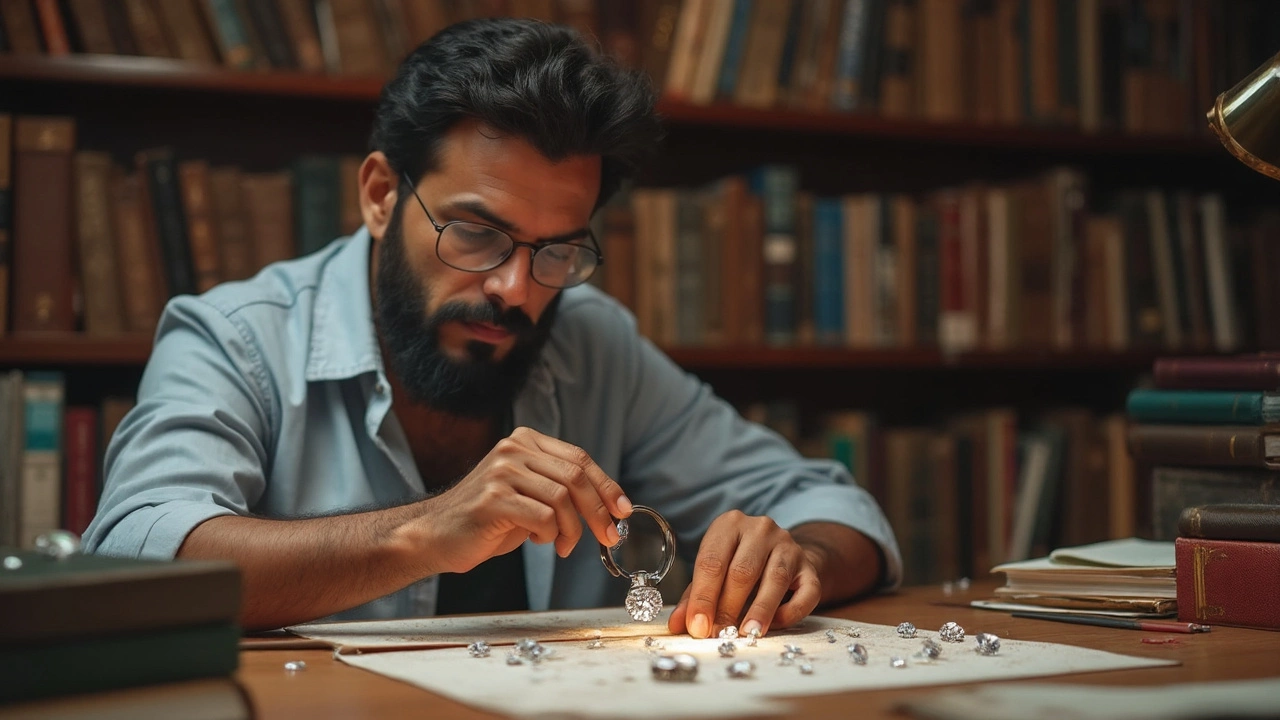
Factors Influencing Diamond Prices
Ever wonder why one diamond costs more than another? There are lots of factors at play, and if you're eyeing diamond rings in India, understanding these can help stretch your budget further.
The Four Cs Revisited
First up, you guessed it: the Four Cs matter a lot. A diamond's cut can make or break its sparkle. A well-cut diamond isn't just about shape; it's about how well it handles light. For color, expect to pay more for colorless stones. With clarity, fewer flaws mean a higher price tag. And naturally, bigger, fatter diamonds (think higher carat weight) come with bigger price tags too.
Country of Origin
Believe it or not, where a diamond hails from can jack up the price. Diamonds from Canada, for example, tend to be pricier due to strict ethical mining standards. Argentinian diamonds, with their rare and vibrant colors, can also fetch higher prices, making them a unique choice for collectors and enthusiasts.
Market Demand and Trends
When flashy celebrity rings or royal engagements headline, they can influence market demand and costs. If there's a hot new style or cut that everyone’s raving about, that particular type might see a surge in price.
Certification
Ever heard of GIA, AGS, or IGI? These guys certify diamonds, vouching for a gem's quality. A certified diamond is usually worth more than one that's not, so those little certificates can actually mean a lot.
Currency Fluctuations
If you've ever traveled, you know how the rise and fall of exchange rates can affect buying power. It's the same for diamonds. Changes in currency exchange can affect how much your international diamond will cost in India, so keeping an eye on those can save some bucks.
| Factor | Influence on Price |
|---|---|
| Cut Quality | Higher cut quality increases price significantly |
| Color Grade | Colorless diamonds are more expensive |
| Clarity | Fewer inclusions increase value |
| Carat Weight | Larger carat weight boosts cost |
Arming yourself with this knowledge means you won't just be staring at the sparkle; you'll know exactly why you’re paying what you are. So, when hunting for that perfect diamond ring in India, you can confidently decide if it’s worth the splurge or if a savvy choice will give you the same bling without breaking the bank.
Tips for Buying Diamond Rings in India
Getting the perfect diamond rings can be a thrilling yet overwhelming experience, especially in a market as diverse as India's. But don't worry, I'm here to make it a bit easier for you. Here's what you need to keep in mind:
Do Your Research on Diamond Quality
The Four Cs—Cut, Color, Clarity, and Carat—are your best friend here. You want a diamond that not only looks good but is worth the investment. Always insist on checking certifications from reputable labs like GIA or IGI. This will give you a fair idea of what you're buying.
Compare Prices and Get Touchy
Before sealing the deal, visit at least a few shops and compare prices for similar quality diamonds. It's not just about the online logic, touchy-feely comes into play when you actually see and handle a few stones in person. Quite often, the way it sits on your finger might change your mind!
Look For Ethical Diamonds
Don't forget about the ethics of diamond sourcing. It's always a good move to ask for diamonds marked as conflict-free or sourced through ethical mining practices. This ensures that your purchase doesn't have a hidden environmental or social cost.
Pay Attention to the Setting
The setting can make or break the deal. A diamond might look extraordinary in a certain kind of setting. Make sure the metal color complements the stone. Think of platinum or white gold for something classic, or maybe rose gold for a modern twist.
Negotiate and Ask Questions
Never shy away from negotiating. Prices often have wiggle room. Every purchase should come with a fair share of transparency, so ask questions. Where's it from? Any special features? Is there a return policy? The more you know, the happier you'll be with your purchase.
A Quick Look at Preferences
| Preference | Percentage |
|---|---|
| Solitaire | 40% |
| Halo | 25% |
| Vintage | 15% |
| Three-Stone | 10% |
| Others | 10% |
Remember, buying a diamond ring is a personal experience. It should reflect your style and values while making a smart financial move. Armed with these tips, go on and find that perfect sparkle!
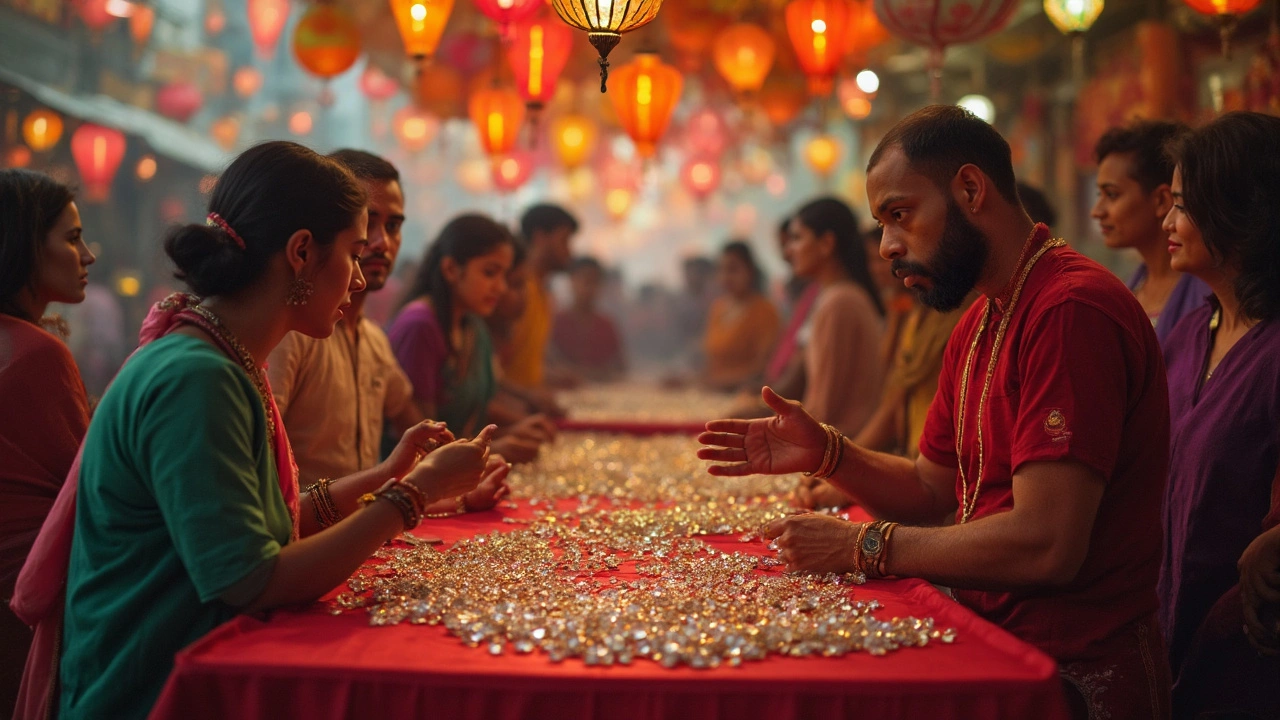
What to Avoid When Choosing Diamonds
Shopping for a diamond, especially in places like India, can be overwhelming with all the options flashing their sparkle at you. But hey, it’s not all about the shine, and there are some pitfalls you might want to sidestep to get the best out of your investment. Let's dive into some common mistakes to avoid.
1. Ignoring the Four Cs
You’ve probably heard it before, but it's worth repeating: don’t ignore the Four Cs—Cut, Color, Clarity, and Carat. Sometimes people get dazzled by a larger carat and forget that a poorly cut diamond will never have the same brilliance as a well-cut one, regardless of its size.
2. Overlooking Certification
Always ask for the diamond’s certification. It’s like the diamond's birth certificate, giving you the lowdown on its specifications. Renowned certifications like GIA or AGS ensure you're getting a legit quality stone. Avoid dealing with vendors who can't present credible certificates, or you might end up paying for a substandard gem.
3. Falling for the "Discount" Gimmick
We've all been there—seeing that '70% OFF!' sign can stir some excitement. But beware, buying diamonds isn’t the same as shopping for clothes during a sale. If deals seem too good to be true, they probably are, potentially masking low-quality stones.
4. Neglecting to Check the Origin
The origin of a diamond can influence its value and ethical footprint. Diamonds from conflict-free zones like Canada come with peace of mind, knowing you're making an ethical choice. In contrast, diamonds from conflict areas might seem cheaper but carry moral implications.
5. Not Considering Your Budget
Have a budget and stick to it. Going overboard can lead to buyer's remorse. You can often find a stunning, budget-friendly diamond that will not break the bank by balancing the Four Cs wisely.
By keeping these points in mind, you can avoid common diamond-buying mistakes, ensuring your purchase is both beautiful and wise. Remember, an educated buyer is a smart buyer!
